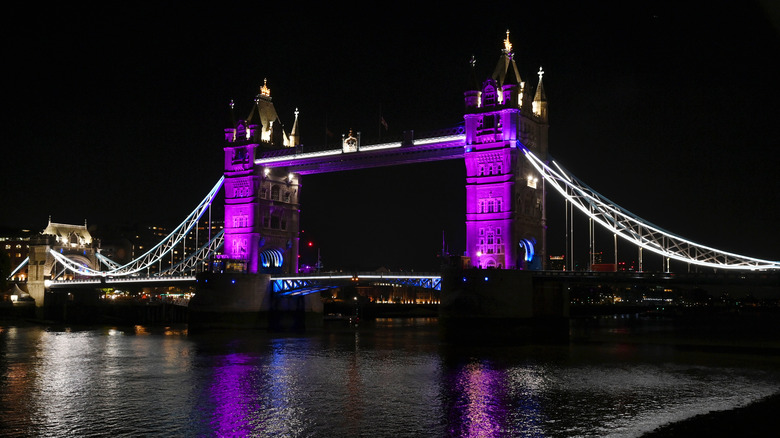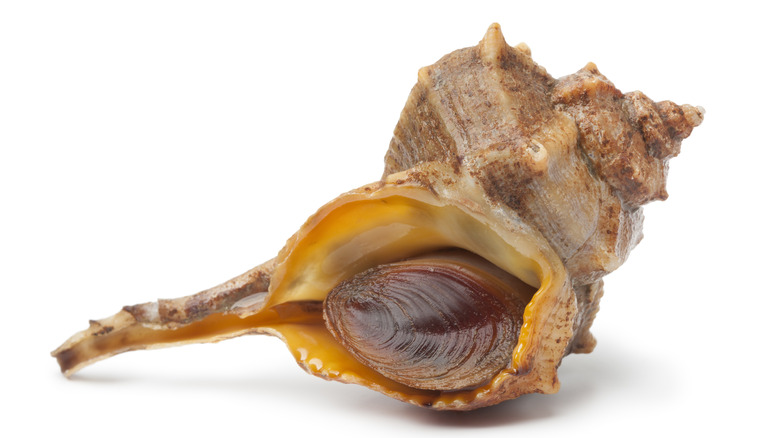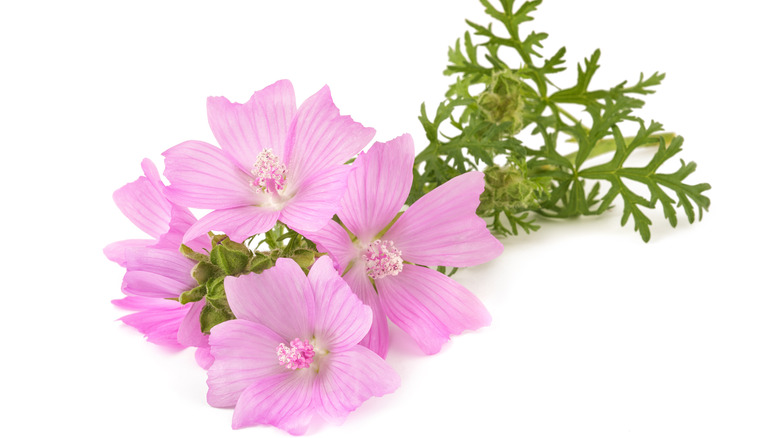The Real Reason Purple Is A Royal Color
For many centuries, the color purple has been associated with royalty. The majestic hue garnered attention in the ancient world as royals adorned themselves with purple garments. Going back to Persia, King Cyrus wore a purple tunic. It's also been said that plebians — the lower class of the Roman Empire — were not allowed to wear purple as it was associated with emperors (via History). Flash forward to Queen Elizabeth I, who decreed the color purple for the royal family alone (via Live Science).
Per History, the penalty for violating the Roman strictures on the color purple was quite severe — death. In Elizabethan England, the commoners adhered to what were called "Sumptuary Laws," which laid out exactly what types of fabrics and colors could be donned (via Live Science). With all of the laws and regulations surrounding the color, one might be surprised that the down-to-Earth process of supply and demand plays a strong role in the age-old perception of purple as a royal color.
The Dye's Not So Royal Origins
Despite the color purple's regal reputation, it doesn't originate from a very exalted source. For hundreds of years, the dye was actually derived from a mucous gland that lies in a mollusk's rectum. Going back to the 16th century and perhaps prior to then, the method of distilling the rectal mucous was used to produce the loftiest of purple hues, also known as "Tyrian Purple" (via BBC).
The Phoenicians used this color by extracting it from a sea creature called the Bolinus brandaris (via Live Science and Nature). It took many thousands of these critters' anal offerings to elicit enough dye for the empire's upper crust. After drying and boiling, the dye retained an odorous quality even on textiles, but it had the distinction of not fading with time like other colors were prone to doing (per BBC). The laborious process that went into producing it caused its rarity and expense. Yet even royalty sometimes couldn't afford it. Aurelian, a Roman emperor, wouldn't permit his wife to buy a shawl of Tyrian purple because its cost was well above what the ruler was willing to spend (via Live Science).
Its Transition From Illustrious to Common
After the 15th century saw the collapse of the Byzantine Empire, the royals' dominion over the color began to fade (via History), unlike the coveted hue itself. By 1856, an English chemist named William Henry Perkin wound up inventing a synthetic purple dye while he was running experiments with an anti-malaria drug. Once he realized the color could dye fabric, he patented his invention under the name of "aniline purple" (via Live Science).
In 1859, his color name would change to "mauve," which was derived from the French mallow flower which bore the hue Perkin inadvertently emulated. Since a color comparable to Tyrian purple could be achieved without harvesting up to 250,000 sea snails for a single ounce of dye (via History), the color became so widespread that its use lost its exclusivity. The color may not carry the status of its mollusk-derived predecessor, but once it hit the market in the 1850s, it dissolved one of many class divides.


